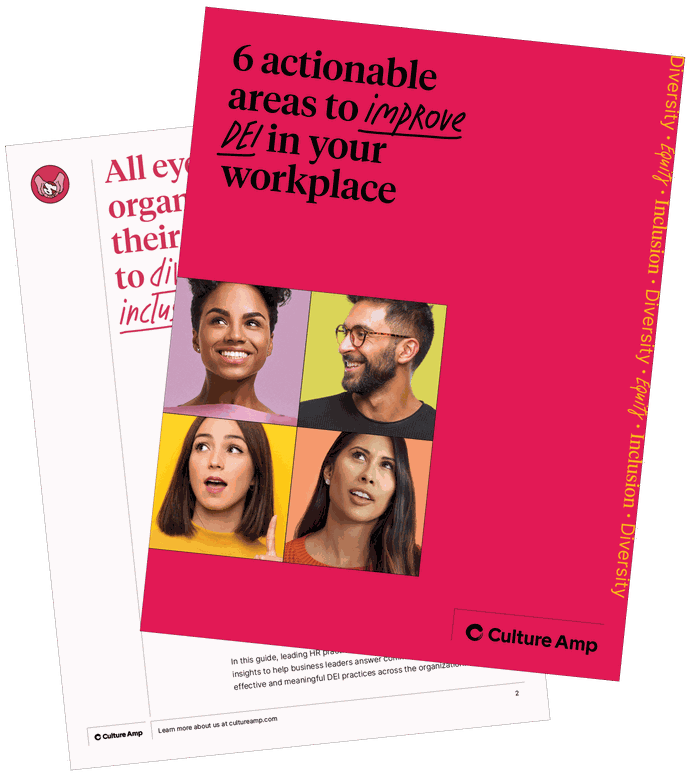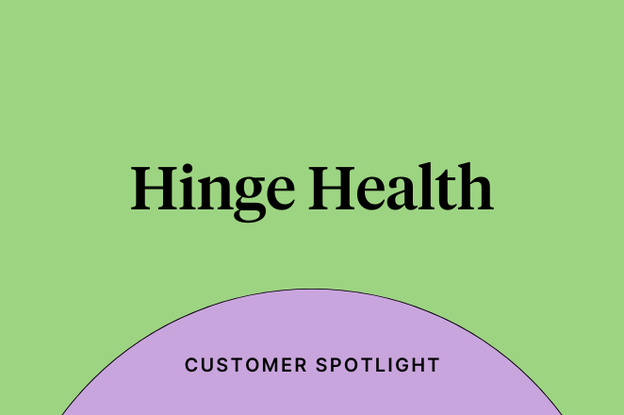Microaggressions at work: Recognizing & overcoming our biases

“It’s just a joke.” “You know that’s not what I meant.” For many folks from marginalized communities, these offhand remarks are something they hear regularly – and often in response to them expressing their hurt and pain.
An Asian-American woman born in America may hear such phrases when she expresses offense at the question: “Where are you really from?” A Black man’s hurt may be belittled when he’s told he’s “overreacting” when a co-worker calls him “one of the good ones.” And someone from the LGBTQ* community may be considered overly sensitive if they get fired up when someone remarks: “That’s so gay!”
Most of the time, it’s true that the speaker has no intention of causing offense or pain. People are often unaware of how their words or actions impact the recipient, whose experiences differ so much from their own. But regardless of intention, these instances of “microaggressions” have real effects on people’s lives. Much like unconscious biases, being unaware isn’t an excuse for perpetuating harmful behaviors or beliefs.
In this blog, we’ll briefly discuss the various types of microaggressions and how they manifest at work. We’ll also share tips for how you can respond to and grow from being told you’ve committed a microaggression.
What are microaggressions?
Kevin Nadal, a professor of psychology, defines microaggressions as:
“The everyday, subtle, intentional – and oftentimes unintentional – interactions or behaviors that communicate some sort of bias toward historically marginalized groups."
Microaggressions happen everywhere, including at work. We may call microaggressions “micro” aggressions, but their cumulative impact can be measured on a “macro” scale. Day-by-day, slight-by-slight, microaggressions can feel like "death by a thousand papercuts." Given that most folks spend the majority of their lives at work, microaggressions in the workplace have a profound impact on people’s mental, spiritual, and even physical health. That's probably part of why only 3% of Black employees reported wanting to return to the office full-time, compared to 21% of White workers. For all these reasons, we believe that understanding and reducing the occurrence of microaggressions is essential for building a better, more humane world of work.
Microaggressions usually emerge from our deeply-rooted biases against those who are different from us. Frequently a result of our upbringing, many folks don’t know they possess these biases until they come face-to-face with them in a conversation or confrontation. That being said, it’s human to make mistakes. Our perspectives are limited, and it’s natural not to understand how every other community experiences the world. What matters most is how we choose to respond once we’re made aware of our biases and the ways they manifest themselves as microaggressions.
Understanding the various types of microaggressions
By definition, microaggressions are a comment or action that negatively targets a marginalized group of people. Communities or identities that can be targeted include, but are not limited to:
- Race
- Gender
- Age
- Sexual orientation
- Socioeconomic class
- Citizenship status
- Disability
- Religion
Often, folks exist at the intersection of many overlapping identities (e.g., an Indigenous trans woman or a disabled immigrant). Thus, microaggressions can be intersectional. For example, an Indigenous trans woman may encounter microaggressions on the basis of her race, her gender, being trans, or any combination of the three.
Subgroups of microaggressions
One study from the Teachers College at Columbia University identified subgroups of microaggressions. While the study itself focuses on racial microaggressions, we find that the definitions, which we've rephrased below, can also be applied to microaggressions more broadly.
- Microassaults: An explicit verbal or non-verbal attack meant to hurt the intended victim through name-calling, avoidant behavior, or purposeful discriminatory actions. For example, telling somebody to "go back to their country," using homophobic language, or displaying White supremacist symbols. This type of microaggression is the most likely to be enacted purposefully.
-
Microinsults: A verbal or nonverbal communication that subtly conveys rudeness and insensitivity in a way that demeans that person's heritage or identity. These often take the form of "subtle snubs" that the perpetrator is unaware of, but the recipient is fully cognizant of.
An example of a verbal microinsult is making the comment, "I think the most qualified individual should get the job, regardless of race," to a non-White candidate or asking a non-White student how they got into the school. Microinsults can also happen nonverbally, such as when a male manager is distracted and uninterested when talking to his female direct reports. - Microinvalidations: A communication characterized by their intent to exclude, negate, or nullify the psychological thoughts, feelings, or experienced reality of a person from a marginalized background. Examples include telling a Black person, "We are all human," or asking a non-White co-worker born in America how they got so good at English.
How microaggressions manifest at work
Microaggressions, in all its forms, can manifest themselves verbally, behaviorally, or environmentally. Below are a few examples of how microaggressions can show up at work.
A verbal microaggression occurs when someone says something offensive or disrespectful to a marginalized group. Some examples include:
- Asking a lesbian co-worker, “Who is the ‘man’ in your relationship?”
- Making stereotyped comments, such as telling a Black person, "You like fried chicken, right?"
- Mispronouncing someone’s name because “it’s too difficult to say”
- Complimenting a non-White colleague’s English under the assumption they weren’t born and raised in an English-speaking country
- Continuing to use words or phrases that others find offensive
A behavioral microaggression is an insensitive or problematic action that often plays into identity stereotypes. This might look like:
- Mistaking a Latinx colleague for a service worker
- Giving only personality-based feedback (“You should smile more”) to a female employee during her performance review
- Excluding a coworker with a disability from an after-work event due to the assumption that they aren’t capable of participating
- Assuming an older coworker isn’t able to use or learn to use a specific technology (i.e., ageism)
Environmental microaggressions are expressed in society through a lack of representation, inclusion, and diversity. This often manifests through:
- Excluding people of color from executive positions
- Not offering accessible facilities or buildings
- Naming all the buildings or rooms after White men
- Not establishing any protocol for sharing gender pronouns
Microaggressions can significantly and adversely impact organizational health by creating a toxic work culture that corrodes employee engagement and overall employee experience. Experiencing microaggressions can steadily wear away at everything from performance, sense of belonging, current and future development, to retention, and more. Not least of all, microaggressions can undermine your organization’s diversity, equity, and inclusion efforts and stagnate the innovation afforded by diverse perspectives.
What to do when you’ve committed a microaggression
Almost everybody has committed a microaggression before, but not everybody is accustomed to being called out and responding with grace. Accepting criticism is difficult for the best of us, no matter how enthusiastically we embrace the idea of unlearning our biases. That’s why it’s important to treat these confrontations as learning moments, rather than personal attacks. Just because you’ve said something problematic doesn’t mean you are a helplessly problematic person. If you listen to others’ concerns with an open heart and mind, you can make significant progress in aligning your words and actions with your ideology.
With that said, here are a few things to keep in mind if you are approached by someone who is concerned or hurt by something you have said or done:
- Resist the urge to react defensively. Accepting criticism is difficult, even more so when you’re being criticized for something you were unaware of – like the right way to interact with a colleague in a wheelchair without infantilizing them. It probably wasn’t your intention to offend them, but intention doesn’t overrule the very real pain you’ve caused them.
- Sincerely listen with an empathetic heart. Avoid saying anything similar to “I didn’t mean it” or “I was just making a joke.” By saying you didn’t mean it, you can come across as trying to discredit the other person’s experience. And calling the encounter a “joke” can seem like you’re making light of that person's pain. As they express their feelings, strive to empathize and understand their perspective, rather than invalidate or “other” it.
- Verbally acknowledge your impact. Regardless of your intent, it’s important to recognize and own up to the pain you’ve caused them. Verbal acknowledgment also serves as a spoken “promise” you make to yourself and to the other person. It’s a way of conveying, “I have heard and internalized what you said, I now recognize the pain I’ve caused, and my future self will act more thoughtfully and intentionally because of what you have shared with me.”
- Apologize, but don’t expect forgiveness. You may not get it, and that’s okay. The best way to make amends is to educate yourself and be more cautious in the future.
- Ask questions, but don’t expect answers. If your relationship allows the two of you to dig deeper, you can consider asking more questions about their life experiences, including the microaggressions they’ve experienced. Doing so may help you untangle other verbal or nonverbal microaggressions you are prone to, as well as deepen your understanding of their overlapping identities.
That being said, you shouldn’t expect folks from marginalized communities to do the heavy lifting for you. The burden of teaching has historically fallen on folks from underrepresented backgrounds, but it’s time we did our own homework.
What to do after the confrontation
As you walk away from the conversation, try not to hyper-focus on your guilt, or worse, to treat what happened like a one-time fluke. Instead, use the encounter as a springboard for driving personal, or even organizational growth.
Here are a few ways to productively channel the experience into meaningful action at your company:
- Educate yourself. Exposing yourself to diverse perspectives can help you uncover unconscious biases and build the awareness necessary to align your actions and words with your values. Whether it’s books, movies, TV shows, or podcasts, there is a myriad of resources available for your self-education.
- Step up for co-workers from marginalized communities. If you see a microaggression unfolding, there are several things you can do. Kerry Ann Rockquemore suggests engaging in what she calls “microresistance” by speaking up and intervening (professionally) on behalf of someone from a marginalized group. It can be as simple as saying, “What makes you say that?” or “I don’t get the joke. Can you explain it to me?” If you aren’t in a position where you feel safe speaking up at the moment, you can also consider approaching the perpetrator at a later time.
- Raise awareness of microaggressions among coworkers and friends. Doing so can reduce some of the burdens marginalized folks face at work. As you continue to educate yourself and grow, you can share resources and raise awareness about unconscious biases, the different types of microaggressions that exist, and the fact that we are all capable of (unintentionally) committing them.
- Advocate for organizational and/or policy changes. For example, you can start a petition to offer gender-neutral bathrooms, or ask to hold a Diversity, Equity, and Inclusion survey to measure and understand how different folks feel at your company. You can also advocate for increased resources and support systems specifically for individuals from marginalized communities, or to hold organized focus sessions across the organization to promote greater understanding and awareness.

Create a workplace where everyone can thrive
Download the ebookRecognizing and untangling microaggressions at work
We’re all biased, we all make mistakes, and we’ve all probably committed microaggressions against others. That doesn’t mean our imperfections are an excuse for the problematic or insensitive ways we interact with others. It’s not about accepting your biases as inevitable – it’s about recognizing how they affect others and untangling them from your core beliefs and behaviors.
Every individual at a company shifts the needle on inclusion and belonging. That’s why building a truly diverse, equitable, and inclusive workplace begins by making an honest effort to educate yourself, embrace unfamiliar perspectives, and act thoughtfully and intentionally.
Resources to help start your self-education
These resources are by no means exhaustive and have been broadly placed into several, equally non-exhaustive categories. Many of the resources focus on incredibly intersectional issues and identities but are listed only once for ease of reference.
General
- How inequity is showing up in virtual work environments (Culture Amp)
- Why intersectionality matters for your organization (Culture Amp)
- 2022 Workplace DEI Report: Demystifying the DEI landscape (Culture Amp)
- The intersectionality wars (Vox)
- How to beat stereotypes by seeing people as individuals (Greater Good Magazine)
- Allyship at work: Where white employees are falling short (Lean In)
- White Privilege: Unpacking the Invisible Knapsack by Peggy McIntosh
Gender
- Celebrating Women’s History Month: An intersectional lens (Culture Amp)
- Rethinking masculinity in the workplace (Culture Amp)
- How to improve the gender diversity of work teams (Culture Amp)
- Women in the workplace 2020 (Lean In)
- Interrupting sexism at work (Catalyst)
- Everyday Sexism by Laura Bates
Age
LGBTQIA*
- Beyond rainbow washing: Supporting LGBTQ* at work and beyond (Culture Amp)
- Why sharing gender pronouns at work matters (Culture Amp)
- Guide to being a trans ally (Straight for Equality)
- Making the workplace more equitable for trans people (NPR)
- How we fight for our lives by Saeed Jones
Racial/Ethnic Identity
- One Black employee’s answer to “How can I help?” (Culture Amp)
- Understanding and celebrating UK Black History Month (Culture Amp)
- Cultivating meaningful change for Black people in the workplace (Culture Amp)
- Latinx Heritage Month: Why celebrating begins with listening (Culture Amp)
- 4 ways to support and amplify your Latinx employees (Culture Amp)
- AAPI Heritage Month: Rethinking the Asian American identity (Culture Amp)
- Your black colleagues may look like they’re okay — chances are they’re not (Refinery 29)
- The New Jim Crow: Mass Incarceration in the Age of Colorblindness by Michelle Alexander
- Latinx and what that means for America (New York Times)
- ‘Death by a thousand cuts:’ The impact of microaggressions on the AAPI community (New York-Presbyterian)
- We Too Sing America: South Asian, Arab, Muslim and Sikh Immigrants Shape Our Multiracial Future by Deepa Iyer
- The struggle for self-determination in Hawaiʻi (Liberation School)
Religion
Citizenship status
- My life as an undocumented immigrant (NY Times)
- In a Day’s Work: The Fight to End Sexual Violence Against America’s Most Vulnerable Workers by Bernice Yeung
Disability
- Building an equitable global accommodations policy (Culture Amp)
- Disability in the workplace: Embracing disability diversity (Culture Amp)
- Disability in the workplace: Barriers to employment & retention (Culture Amp)
- 3 lessons on disability inclusion from Dylan Alcott (Culture Amp)
- Words matter, and it’s time to explore the meaning of ableism (Forbes)
- Disability Microaggressions — AKA “Ableist things people say” (Medium)
- Disability Visibility: First-Person Stories from the Twenty-first Century edited by Alice Wong

Build a diverse, equitable, & inclusive workplace
Learn how to understand and improve DEI across your organization.






